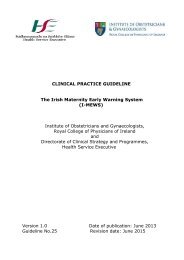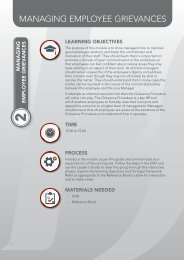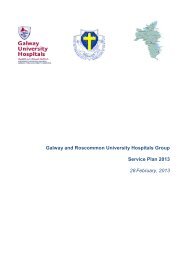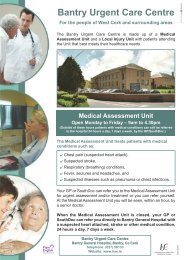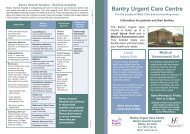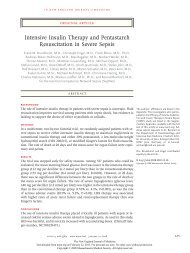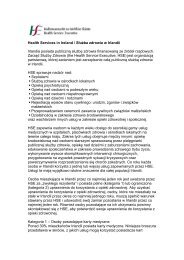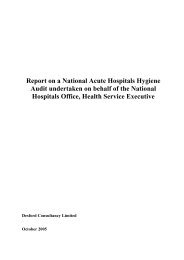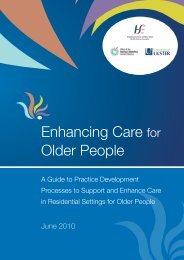Review of acute hospital services in the Mid - Health Service Executive
Review of acute hospital services in the Mid - Health Service Executive
Review of acute hospital services in the Mid - Health Service Executive
- TAGS
- acute
- www.hse.ie
Create successful ePaper yourself
Turn your PDF publications into a flip-book with our unique Google optimized e-Paper software.
Assured quality<br />
<strong>Review</strong> <strong>of</strong> <strong>acute</strong> <strong>hospital</strong> <strong>services</strong> <strong>in</strong> HSE <strong>Mid</strong>-West<br />
An action plan for <strong>acute</strong> and community <strong>services</strong><br />
The key requirements for ensur<strong>in</strong>g assured quality <strong>of</strong> future healthcare delivery are as<br />
follows:<br />
• Sufficient, appropriately tra<strong>in</strong>ed and accredited workforce which is able to:<br />
- Engage <strong>in</strong> redesign<strong>in</strong>g and deliver<strong>in</strong>g <strong>services</strong> through new patterns, locations and<br />
times <strong>of</strong> deliver<strong>in</strong>g healthcare with new technologies;<br />
- Develop new extended roles for nurses and allied health pr<strong>of</strong>essionals, while<br />
recognis<strong>in</strong>g <strong>the</strong> significant time lag <strong>of</strong>ten present <strong>in</strong> retra<strong>in</strong><strong>in</strong>g;<br />
- Meet European Work<strong>in</strong>g Time Directives on maximum work<strong>in</strong>g hours through<br />
appropriately staffed and designed rotas;<br />
• A formal system <strong>of</strong> cl<strong>in</strong>ical governance and peer review to ensure an effective quality <strong>of</strong><br />
patient and staff safety through a cycle <strong>of</strong> audit, feedback and improvement. This<br />
<strong>in</strong>cludes <strong>the</strong> balance <strong>of</strong> safety, quality, volume, risk and evidence about better cl<strong>in</strong>ical<br />
outcomes from higher volumes, for example for specialist procedures such as paediatric<br />
surgery, some cancers, certa<strong>in</strong> types <strong>of</strong> trauma and vascular surgery;<br />
• Hav<strong>in</strong>g access to systematic and rout<strong>in</strong>e horizon scann<strong>in</strong>g for <strong>the</strong> impact <strong>of</strong> service and<br />
cl<strong>in</strong>ical developments across <strong>the</strong>rapies, procedures, drugs, imag<strong>in</strong>g and devices,<br />
<strong>in</strong>clud<strong>in</strong>g:<br />
- Diagnosis and treatment on a m<strong>in</strong>imally <strong>in</strong>vasive basis;<br />
- Surgery be<strong>in</strong>g replaced by drugs and o<strong>the</strong>r <strong>in</strong>terventions;<br />
- Implantable devices;<br />
- New less <strong>in</strong>vasive imag<strong>in</strong>g technologies; and<br />
- Genetic test<strong>in</strong>g support<strong>in</strong>g <strong>in</strong>dividual specific drug treatments.<br />
138<br />
<strong>Health</strong> Department Letter 69: Promot<strong>in</strong>g <strong>the</strong> Development <strong>of</strong> Managed Cl<strong>in</strong>ical Networks <strong>in</strong> NHS Scotland, Scottish<br />
<strong>Executive</strong>, September 2002.<br />
127



